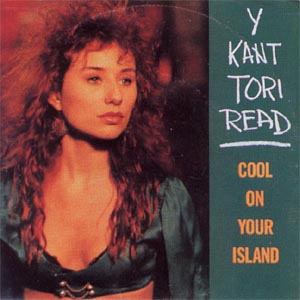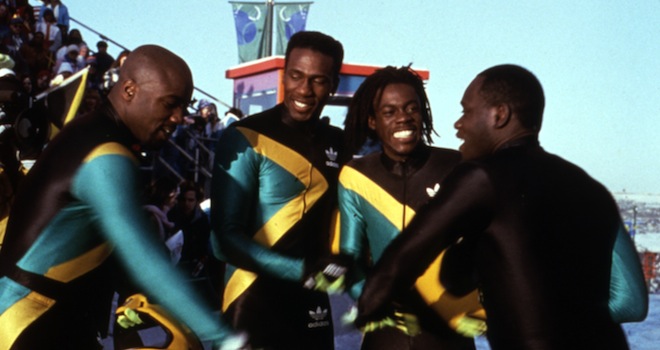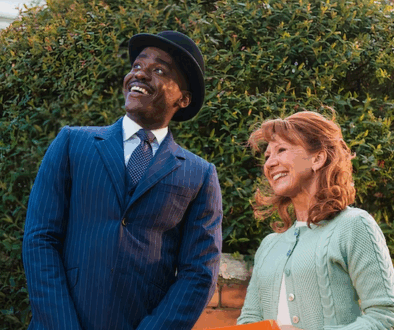Much Stronger Than You Know (Cool On Your Island)
Cool on Your Island (single mix, 1988)
Cool on Your Island/Hey Jupiter (first performance, 1996)
Cool on Your Island (official bootleg, 2005)
Cool on Your Island (official bootleg, 2007, Tori set)
Cool on Your Island (live, 2011)
Cool on Your Island (live, 2017)
On an album of misfires, “Cool On Your Island” stands out as the song that Amos has most readily accepted and reintegrated into her canon. It is not the first song from the album that she played live—we’ll deal with that next entry as we wrap up this stretch so that we can actually get into the good stuff. But it is the one she has ultimately played the most—seventy-two times over the course of her tours, more than “Girl” (70), “Professional Widow” (57), or “Muhammad My Friend” (42). If you’ve seen a Tori Amos concert, there’s around a one in twenty chance she played it—it’s one of her hundred most common choices (out of a gobsmacking 485 unique songs played live across her career). And it comes the closest to being a song she’s spoken about, if not warmly, at least not entirely coldly, amusingly suggesting in 1998 that “’Cool on Your Island’ works more than anything else, and I wrote that, I think, with Kim Bullard, but you’ll have to check the credits because I’ve been using too much deodorant lately,” and a year later upgrading the assessment to “there are moments that I think were right for the time on Y Kant Tori Read. I think ‘Cool On Your Island’ had moments that were right for 1987, which was when I recorded it.”
What immediately distinguishes “Cool On Your Island” from the other half-dozen songs of frustrated or anguished love on Y Kant Tori Read is that it is sung from a position of strength. It opens with an ultimatum—”if you don’t treat me better / baby I’ll just run away,” and stays in this vein of strength, most obviously in the pre-chorus “come on baby / I’m much stronger than you know / sometimes / I’m not afraid to let it show.” These lines prove the beating heart of the subsequent live performances, with Amos clearly relishing their delivery, letting her voice jump to a growl, or accompanying the line with an actual fist-pump in the 2011 performance linked above.
The song is by no means perfect, nor even necessarily great. Its central metaphor is murky—Amos declares that “I can take only so much / cool on your island” before asking, “Is it cool on your island?” But why a cooling breeze on a tropical island (the location is ultimately established by the song’s arrangement, which we’ll come to) should serve either as a mark of a relationship gone sour or, for that matter, a bad thing at all is desperately unclear. Amos is trying to work a double meaning between “cool breeze” and the notion of cool as something disaffected and detached (as evinced by the eventual substitution of “you’re so cool baby” for “is it cool on your island?”), with the island in the latter context being her lover’s isolation from her, and it’s a clever double meaning that nevertheless doesn’t quite come through, although the reprise of the first verse to create “if you don’t treat me / then one day you’ll wake up cold” is downright clever. But this is a slight muddiness, as opposed to the fundamental “this isn’t actually saying anything” of, say, “On the Boundary.”
 Musically, the song is both more interesting than most of Y Kant Tori Read and characteristically flawed. The song is given a Latin-inflected drumbeat, initially counting off eighth notes with the downbeat on the fifth, and eventually settling into a quarter note pattern that stresses the two and four beats. This runs a bit cloying, feeling as though just because the song mentions an island it has to be given a Caribbean feel, but this is unfair—the song is clearly written around this. The first line, for instance, is geared to put the stresses on “treat” and the first half of “better,” which requires the Latin-style beat.
Musically, the song is both more interesting than most of Y Kant Tori Read and characteristically flawed. The song is given a Latin-inflected drumbeat, initially counting off eighth notes with the downbeat on the fifth, and eventually settling into a quarter note pattern that stresses the two and four beats. This runs a bit cloying, feeling as though just because the song mentions an island it has to be given a Caribbean feel, but this is unfair—the song is clearly written around this. The first line, for instance, is geared to put the stresses on “treat” and the first half of “better,” which requires the Latin-style beat.
Nevertheless, the production leans hard and, in many regards, too hard into it. The most egregious section by some margin is the bridge, which topples headlong into bathos with the addition of flamenco guitar and an excruciating “yeah yeah” backing vocal. For the most part, however, some measure of balance is achieved, with the Caribbean touches adding depth and texture without becoming “oh god, Tori Amos is attempting Latin music and it needs to stop.” The verses are carried largely by the bass, which pulses ominously alongside the beat to give the song a sense of faint menace that cuts against the relaxed tropical vibe that the Latin touches otherwise bring, keeping the song in a compelling tension.
Given its quality, it’s tempting to wonder about an alternate universe where Atlantic had the sense to release this, and not “The Big Picture,” as a lead single. Much cuts against this as a credible possibility. It’s not, after all, like the album had the depth or quality to back up a good lead single. And when this did get a single release, the label’s best idea for promoting it was to put it as the b-side on promotional copies of Phil Collins’s “Groovy Kind of Love.” This move makes enough sense that you can see why they did it—both are relatively low key, soft rock numbers with some melodic similarities. But it reveals a stunning failure to think about what they had in terms other than what other 80s hits it might resemble—a problem that, to be fair, plagues the album at large. “Groovy Kind of Love” is an utterly sincere love song precision engineered to be played at forgettable weddings. “Cool on Your Island” is interesting because of its tensions and the ways it is constantly kicking against the sedate tropical vibe into which it’s been set. It’s a song that is interesting because of its small defiances and strengths, not because it’s an easy listening MOR piece.
If one is tempted to imagine how Amos’s career might have gone had the song been the lead single and become the minor hit it seems credibly capable of being, however, one might look to its long afterlife in her live shows. There, the song is stripped of its 1988 excesses. Seated solo at her electric piano (the song is invariably a solo performance, even on tours where Amos has a backing band), Amos offers a simple and mournful rendition that serves mostly to highlight the strength of the composition. The song becomes an argument, or better yet a proof—a demonstration of how the song could have worked on Little Earthquakes. (Compare, in this regard, to “China,” which actually was a Y Kant Tori Read holdover.) And the case is ultimately convincing; there’s a reason she’s played it as often as she has. Where the other Y Kant Tori Read songs were played live as an act of self-healing, “Cool on Your Island” has always been a case for the claim that there was never as much discontinuity between Y Kant Tori Read and Amos’s proper career as her snark about the album would suggest—that it was always the work of a woman who was almost ready to write Little Earthquakes as opposed to an egregious false start.
Recorded in 1987 at any of half a dozen studios in the Los Angeles area. First played live in 1996, where it was frequently used as a lead-in to “Hey Jupiter.” Became a regular part of her setlists as of 2001, and has remained one ever since.
ˆFrom Top: The Jamaican bobsled team at the 1988 Winter Olympics; “Cool on Your Island” single.

 Cool on Your Island (1988)
Cool on Your Island (1988)


